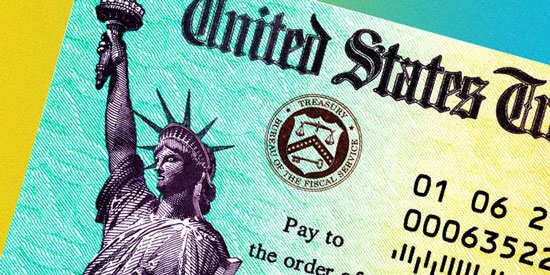In the complex world of business insurance, ensuring your company's fleet or even just a single vehicle is adequately covered can seem daunting. A Business Automobile Policy (BAP) is designed to provide this critical coverage, affording protection against the financial ramifications of auto accidents and other vehicle-related incidents that can impact your operations. Understanding how BAP works is the first step towards making informed decisions that safeguard your assets and promote your business's continued success.
Understanding Business Automobile Policy (BAP):
A Business Automobile Policy serves as the backbone of any organization's vehicle insurance needs. Whether your company owns, leases, or rents vehicles, or if employees use their own vehicles for business purposes, BAP provides comprehensive coverage that addresses liability, physical damage, and other unique risks associated with commercial vehicle use.
Who Needs a BAP?

Virtually every business that uses vehicles within its operations can benefit from a Business Automobile Policy. This includes businesses that:
- Deliver goods or services,
- Transport equipment or products,
- Offer transportation services to clients or employees,
- Require employees to operate vehicles not owned by the business for job-related tasks.
What Does BAP Cover?
A typical Business Automobile Policy encompasses several key areas of coverage:
- Liability Insurance: This forms the policy's core, covering legal or settlement costs if your business vehicle causes bodily harm or property damage to others.
- Physical Damage Coverage: Protects your business vehicles from damage caused by collisions, theft, vandalism, or natural disasters. It's generally divided into collision insurance and comprehensive insurance.
- Medical Payments/Personal Injury Protection: Offers coverage for medical expenses that result from an accident involving a business vehicle, regardless of who's at fault.
- Uninsured/Underinsured Motorist Coverage: This protects your employees and business vehicles if involved in an accident with an uninsured or underinsured driver.
- Non-Owned Vehicle Coverage: Extends liability protection when employees use their personal vehicles for business purposes, or when renting vehicles.
- Hired Auto Coverage: Offers liability protection for rented or borrowed vehicles used for business activities.
Key Considerations When Choosing BAP:
- Understand Your Risk Profile: Identifying the specific risks that your business faces when it comes to vehicle use is critical in selecting an appropriate BAP.
- Policy Limits and Deductibles: Reviewing and understanding the limits and deductibles under your BAP is essential. These can impact your premiums, as well as how much coverage you have in the event of a claim.
- Exclusions and Endorsements: Certain coverages may be excluded from your BAP or require additional endorsements to be included. It's crucial to understand these exclusions and endorsements to ensure adequate coverage.
- Premiums: Balancing coverage needs with budgetary constraints is a significant consideration when choosing BAP. Working with an experienced insurance agent can help you find the best coverage at the most affordable price.
Tips for Managing Your Business Automobile Policy:
- Regularly Review and Update Your Coverage: As your business evolves, so do its vehicle usage and associated risks. Regularly reviewing and updating your BAP ensures that it adequately covers your current operations.
- Promote Safe Driving Practices: Encouraging safe driving behaviors among employees can help reduce accidents and, in turn, minimize potential claims under your BAP.
- Implement Fleet Management Measures: Implementing measures such as vehicle maintenance schedules, driver training, and GPS tracking can help mitigate risks and potentially lower your BAP premiums.
- Maintain Accurate Records: It's essential to keep accurate records of all business vehicles, including registration, maintenance logs, and accident reports. This documentation can be crucial in the event of a claim under your BAP.
Ensuring Adequate BAP Protection:
To ensure you have adequate protection with your BAP, consider:
- Vehicle and Driver Information: Provide accurate and detailed information on all the vehicles covered by the policy and the employees who drive them.
- Coverage Limits: Work with an experienced insurance agent to determine sufficient liability coverage amounts that meet your business's specific needs.
- Endorsements/Add-ons: Discuss additional endorsements or coverage options that may be necessary for your business, depending on the type of vehicles you use and how they're used.
- Regular Policy Reviews: As your business grows or changes, so do your insurance needs. Regularly reviewing your BAP with an agent can help ensure continued adequate coverage.
Implementing Risk Management Practices

Beyond purchasing a Business Automobile Policy, incorporating solid risk management practices can significantly mitigate vehicular risks:
- Driver Training Programs: Investing in defensive driving courses for employees can reduce accident rates and potentially lower insurance premiums.
- Vehicle Maintenance: Regular maintenance checks ensure that business vehicles are in good condition and less likely to be involved in accidents due to mechanical failure.
- Implementing Safety Policies: Establish clear guidelines for vehicle use, including restrictions on mobile device use while driving and procedures to follow in case of an accident.
- Regular Safety Meetings: Regularly reviewing safety procedures and protocols with employees can help reduce the risk of accidents.
- Tracking Driving Behavior: Using telematics or GPS tracking technology in company vehicles can provide valuable data on driver behavior, allowing for targeted training and improvement programs.
- Enforcing Vehicle Inspection Checks: Conducting regular vehicle inspections can identify potential issues before they become a safety hazard.
Conclusion
Navigating your Business Automobile Policy doesn't have to be complex. By understanding the fundamentals of what BAP covers and working closely with a knowledgeable insurance professional to tailor your policy, you can achieve the balance between adequate protection and cost-effectiveness. Furthermore, integrating preventative measures and a culture of safety within your organization will complement your BAP, enhancing protection for your employees and assets against the unforeseen circumstances that lie on the road ahead.




